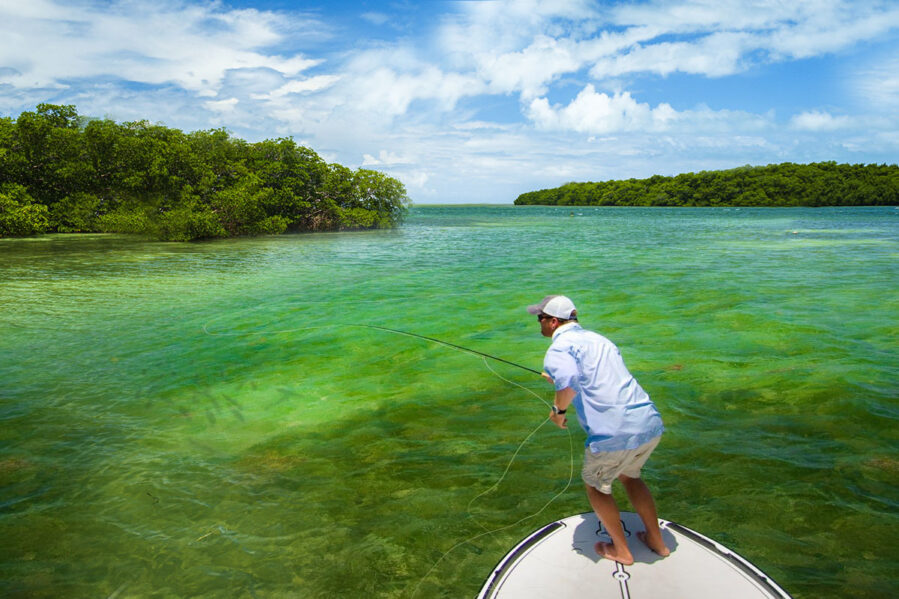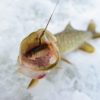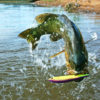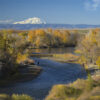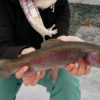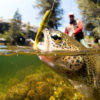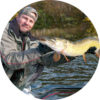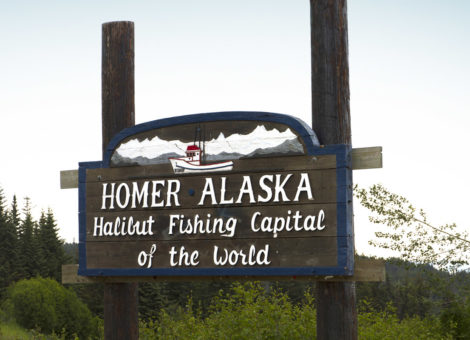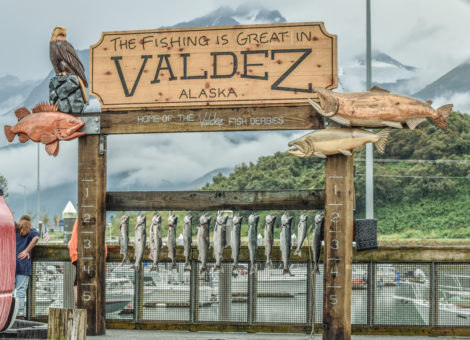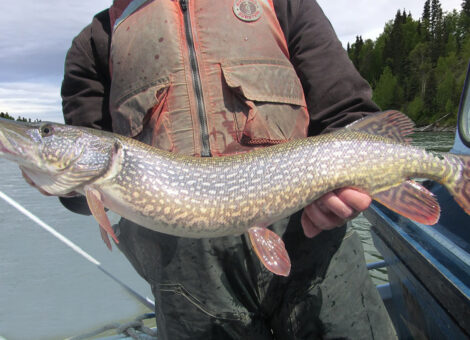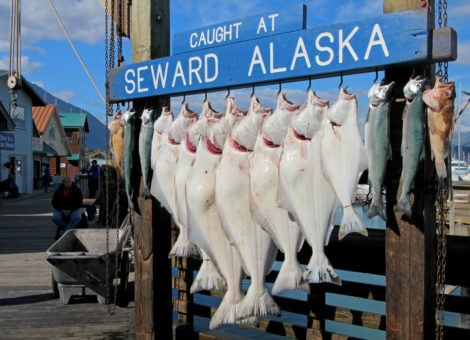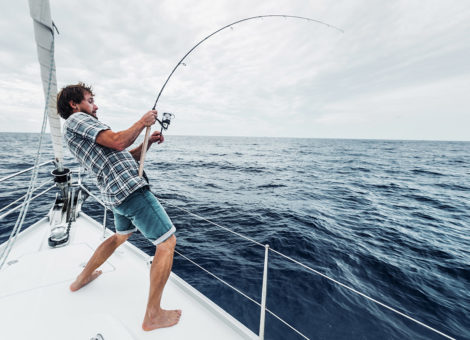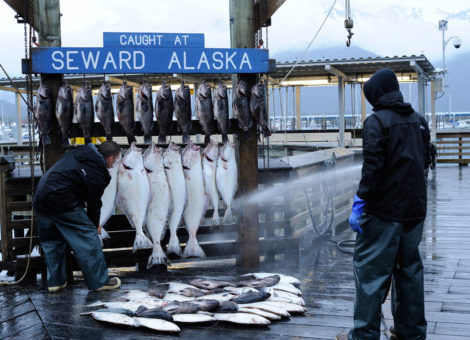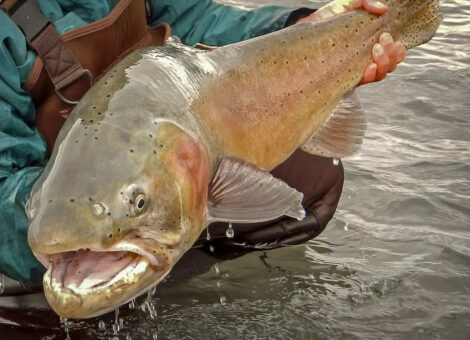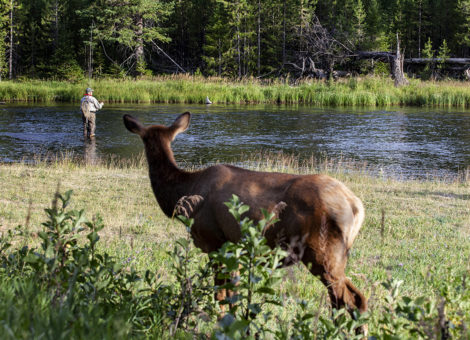There aren’t many destinations on earth that offer anglers such a diverse fishery and diversity of fishing options as Key West. From flats fishing for tarpon, permit and bonefish; to deep sea fishing for kingfish, marlin and wahoo off Tournament Reef; to barracuda, jacks, and even sharks in backcountry channels, Key West offers a fishing adventure to whet the appetite of every angler.
- Shore and Pier Fishing
- Flats Fishing
- Backcountry Fishing
- Deep Sea Fishing
- Wrecks and Reefs
- Key West Fish Species and Seasons
Shore and Pier Fishing
For the casual fishing enthusiast, it doesn’t get any better than casting a line off one of the picturesque fishing piers that dot the Key West coastlines. Key West piers and shores offer anglers the chance to reel in a variety of catches without ever stepping foot off terra firma.
For many anglers, pier fishing doesn’t typically hold the same appeal as fishing the flats or venturing into the backcountry, but in Key West pier fishing offers a number of benefits worth considering. If you’re looking for a casual, relaxing experience without committing an exorbitant amount of effort or “moola”, pier fishing, or shore fishing, is a great option.
One of the most important aspects of fishing from shore in Key West is that you have access to many of the same fish species found farther offshore. This isn’t typical of shore or pier fishing in other locations, but in Key West fishing from shore, or pier, is a legit way to do some serious fishing.
It’s been a few years since I’ve pier fished in Key West but here a few areas I’ve fished as well as those that receive accolades among the locals. This list is limited to spots right around Key West island proper.
White Street Pier
White Street Pier, also known as Edward B. Knight Pier, is one of the most well known and popular seaside destinations in Key West for fishing, walking, and just taking in the magnificent scenery. It’s open 24/7, free to the public, and the perfect spot for the weekend warrior who wants to wet their line without getting wet themself.
As its name suggests, White Street Pier is located at the end of White Street on the south side of Key West sandwiched between Clarence Higgs Memorial Beach to the west and Rest Beach to the east. It’s an excellent spot for fishing, but also a popular place to do some fish watching. The marine life surrounding the pier is incredible and you might just find yourself doing a little sight seeing instead of sight fishing.
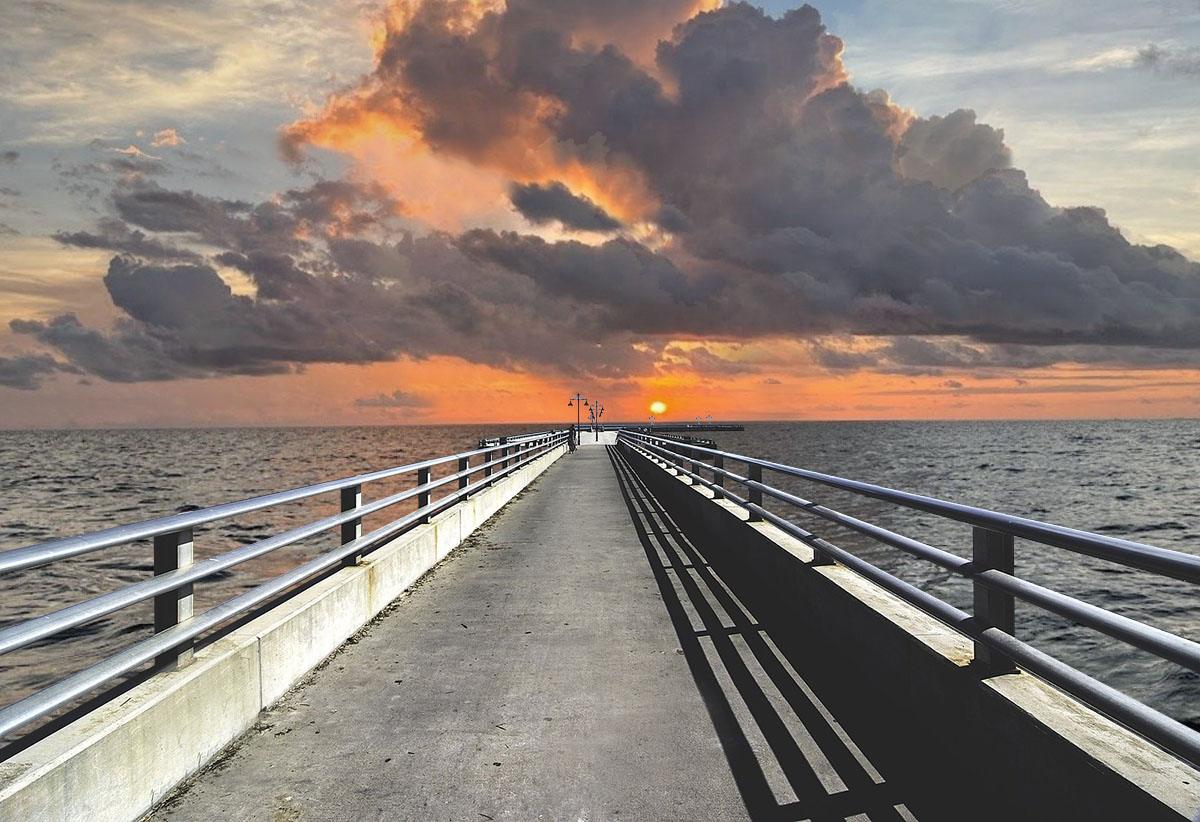
Fish availability and selection varies by season, by day, and even by hour. Some of the common species anglers report catching off the pier include snapper (yellowtail, mangrove, and mutton), jacks (amberjack, crevalle, and yellow jacks), barracuda, grouper, redfish, and even a few permit—but tarpon and snook are the species most frequently targeted by anglers.
A lot of people will fish from the west side of the pier where the water is calmer, but best fishing to be had occurs on the east side of the pier where the wind and current keep the water flush with forage. When you head to the end of the pier you’ll have access to deeper water and a better chance at hooking some larger fish.
If you’re interested in tarpon, they typically show up in the later evening as the sun sets along the east side of the pier. Fish (1) the shadow line that forms along the east side of pier, (2) the far end of the pier on the east side, and (3) the inlet and outlet to the canal at the end of the pier. Anglers report success fishing tarpon using roboworms and small paddletails, as well as mullet and shrimp.
Higgs Beach and Pier
Just 400 yards west of White Street Pier is the lesser visited Higgs Pier. You don’t find a lot of anglers talking about Higgs Pier because it just doesn’t offer the same opportunity as other piers on Key West, but I still think this pier is worth mentioning. You’ll find several of the same fish species here as on White Street Pier.
Higgs Pier is only about 200 feet long (115m) and most of the pier is unfishable. However, the last 50 feet of the pier jetties out into some deeper water where you’ll find a little bit of structure. If you’re in the area, or done fishing White Street Pier, take a quick trip over to Higgs Pier. You might be pleasantly surprised.
The Outer Mole Pier
The Outer Mole Pier is located on the far west end of Key West island at the entrance of Key West Harbor. It was originally built in 1912 as a docking station for naval vessels and today serves as a terminal for larger cruise ships. The pier is a popular spot for diving and provides anglers access to some of the best inshore fishing habitat on the island.
The waters surrounding Outer Mole Pier have abundant fish life and provide anglers access to the rich fishing waters of the Gulf. Expect no shortage of action when fishing Outer Mole. Expect to find the usual suspects hanging out around the pier including tarpon, snapper, mackerel, barracuda, grunt and jacks.
This pier is a well known for tarpon fishing. If you show up during migration, tarpon are fairly abundant in the waters just off the pier. Soft plastics, shrimp and mullet will usually get them biting.
Barracuda are abundant year round and will readily take a variety of lures, although they prefer live bait. Bottom fishing using cut bait or jigs near the entrance to the harbor at Vista Point, where the water is deepest, will yield grouper and snapper. You should target off the sides of the pier anywhere you cand find structure.
Mallory Square
Mallory Square is by no means on my list of top fishing spots in the Florida Keys, however, it has it’s merits. In my book, the biggest benefit of fishing Mallory Square is location. It’s located on the Gulf side of Key West a few block from Duval Street—just a hop, skip, and a jump away from everything Key West. So if your destination is downtown Key West, and you want to fit in a little fishing while the misses is doing some shopping, this is a great place to unwind, relax and reel in a few snappers.
You can catch just about anything off of the docks at Mallory Square that’s found elsewhere along the west end of Key West Island, but the majority of what you’ll pull out of the water are mid-size mangrove, yellowtail and mutton snappers—and a few mackerel if you’re lucky. I’ve heard of anglers hooking some lunkers here, but not many. If you want to increase your chances of landing some bigger fish—maybe even a grouper or two—walk around and find deeper water that provides some cover.
Smathers Beach
Smathers Beach is located on Key West’s Atlantic side a few miles east of White Street Peer. It has about 3,000 feet (900m) of beach front that is ideal for wade fishing, sight fishing, and fly fishing. If you want to do some serious beach fishing for tarpon, or any other species, you’ll want a good casting rod that will allow for some distance casts—but stick with lighter tackle.
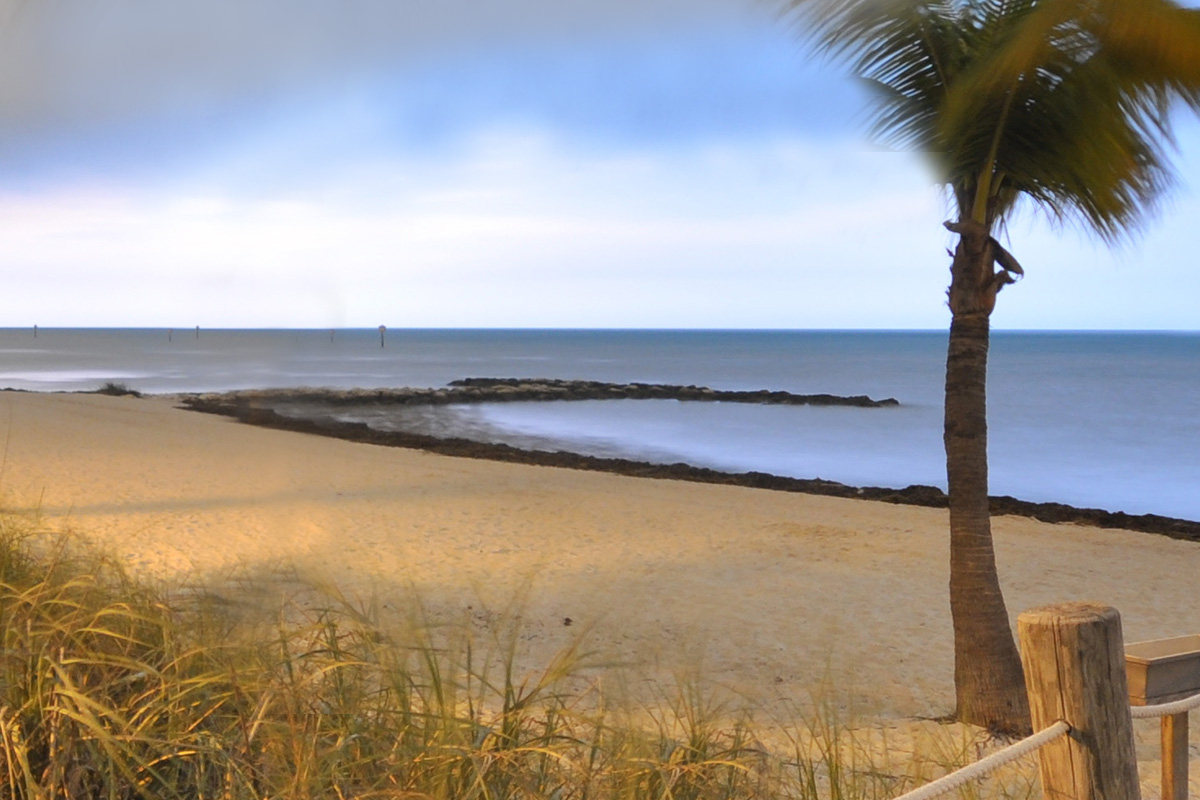
Evening is when baitfish move in closer to shore. It’s also when most tourists are packing up and going back to their hotels. As the baitfish move in, they’re followed by hungry predatory fish. The later hours of the day, when the baitfish move in, is a great time to target tarpon, jacks, snook, and other predatory fish from shore or wade fishing. You’ll start seeing baitfish breaking the surface and tarpon rolling just as the sun is setting.
So what’s the best setup for fishing Smathers Beach? Well, if tarpon is the target, I recommend the following tackle. (This tackle will also work for targeting juvenille tarpon elsewhere on the island.)
- 10 pound light rod (I use Esky)
- 10 pound braided main line
- 20 pound fluoro/mono leader
- 1/8 ounce jig head with 2 5/8 inch paddletail or;
- 2 inch mangrove muddler fly (no barbells)
You can mix up your selection of bait, but the most important thing is that you ‘match the hatch’. The baitfish of Smathers beach are predominantly 1 to 3 inch glass minnows and pilchards. That’s what the tarpon are feeding on and that’s really all they’re going to strike when they’re in the zone. Make sure your lures mimic these baitfish.
If you’re going to fish the jetties on Smathers Beach bring some tennis shoes or wading shoes that provide traction and support. Most of the rocks and boulders on the jetties are pretty stable, but they can be slippery.
Fort Zachary Taylor State Park
Fort Zachary Taylor State Park is just a stone throw south of Outer Mole Pier and offers good opportunity to fish grouper, snapper, tarpon, jacks, and barracuda. There is a jetty provides some good access for fishing. Fishing is only permitted along the west side of the park adjacent to the Key West Shipping Channel. The rocky shoreline from Outer Mole pier all the way down to Fort Zachary Taylor State Park is also great area to cast your line.
Key West Bight
Last, but by no means least, is Key West Bight. If you can manage to get down here for some night fishing, you won’t be disappointed.
At the far end of the dock just behind Galleon Resort is your sweetspot. Pick up some cigar minnows or finger mullet from Key West Bait and Tackle just off Caroline St and head over to the docks around sunset as the tarpon are moving in. Catching monster tarpon in the 80 to 150 pound range here is not uncommon during migration. Make sure you’re using at least 60 pound test line and a sturdy rod or you might end up loosing your bait, tackle, and your fish.
If you want to target smaller tarpon, which tend to be more plentiful year round, a fly rod or light spinning setup will do the trick. Anything resembling a glass minnow will get a bite. For juvi tarpon fish at night under the dock lights.
There are also a fair number of permit in the waters off the docks during certain times of the year. If you want to target permit, fish with live crab for bait.
Flats Fishing
Key West offers about every fishing experience an angler could hope for, but flats fishing is at the top of my list of must-do fishing excursions if you’re going to Key West specifically to fish. If you enjoy the thrill of the hunt, they’re really isn’t anything the compares to sight fishing for the elusive “Grey Ghost” bonefish or highly sought after permit on the flats of Key West. Flats fishing is the ultimate inshore adventure.
Flats Fish Species
You’ll find every fish species fish from Sea Trout to Crevalle Jack on Key West flats, but there are few fish that anglers come from around the world to experience. Without a doubt, Tarpon, Bonefish, and Permit are the main attraction and draw to the flats, with Snook and Redfish a short distance behind.
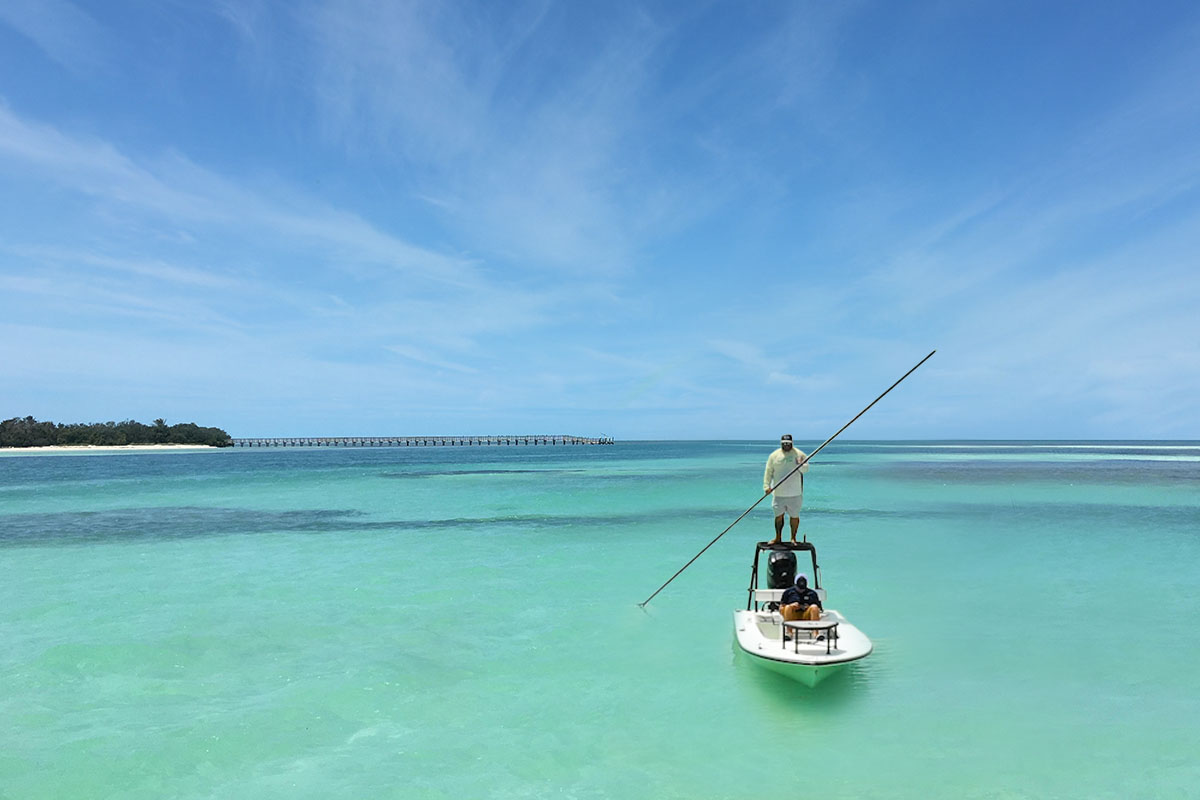
- Tarpon. Most sought after game fish on the flats. Range between 30 and 60lbs. Large tarpon in the 70 to 120lb range are common, and if you’re lucky you may hook a monster over 120lbs. Best tarpon fishing on the Key West flats is from early spring to mid summer. Fish with live, dead, or cut bait. Fresh is better.
- Bonefish. While not as big as tarpon, bonefish put up a hell of a fight for their size. Most weigh in between 3 to 5 pounds, with a few specimens in the 10 to 15 pound range. These fish can be caught using live bait or lures with light tackle. Sight fishing bonefish is probably the most fun you’ll have on the flats.
- Permit. These elusive, flat-bodied fish dart through the flats like nobody’s business. As challenging as it is, sight fishing from a flats boat, pole boat, or (my favorite) a kayak is the way to go when targeting permit on the flats. Live crabs, crab imitation lures, and BackBane Skimmers are the best baits for getting permits to bite.
- Redfish. While not as popular as other fish species, redfish (aka ‘red drum’) are one of the tastier table fares to come out of the Key West flats. Sight fishing with a fly is an effective way to catch redfish on the flats. The key is to cast your fly just beyond his path and move it through his line of sight a foot or two in front of him.
- Snook. You’re not likely to see a lot of snook on the flats, but when you do, it’s be a sight to see. Snook often travel in schools, and watching a school of large snook swim by is an awesome experience. Snook will readily take a variety of baitfish and artificial lures.
When to Fish the Flats
Flats fishing in Key West is a year round sport. But the most productive time to fish the flats is from early spring through summer. During spring fish are in spawning mode and hungry. As the sun heats up—and the water warms—more fish venture into the flats. However, there are times of the year when flats fishing goes from good to exceptional for certain fish species.
January—March
Permit, Barracudas, Redfish, Sharks, Jacks, Cobia
Late winter through early spring is a great time to fish the flats. The weather is mild and the bite is typically strong. You’ll find jacks and cobia out every day. Permit, barracudas, and shark are out on warmer days. March is one of the best months for targeting larger permit, and you’ll start to see a few bonefish if it’s warm enough.
April
Permit, Sharks, Barracudas, Bonefish, Redfish
Bonefish start moving into the flats. Shark fishing with a fly or lure is popular. Permit are still present, but scarce. You’ll find barracudas everywhere in the shallows. Toward the end of April tarpon start working the edges and can be targeted using a fly.
May—June
Tarpon, Bonefish, Permit
Tarpon, bonefish and permit are abundant on the flats by mid May—and the fishing is good! All you need is your fly rod or some light tackle. By June tarpon fishing is full swing and most anglers are sight fishing using a fly rod.
July—October
Permit, Tarpon, Juvenile Tarpon, Bonefish
Notwithstanding the heat, flats fishing is great throughout the summer for permit, tarpon, and bonefish. There are a lot more juvenile tarpon on the flats in July. Sight fishing is the name of the game and it’s pretty easy to spot fish swimming in the calm, clear water. Flats fishing in September and October is superb, just watch the weather. This is the beginning of hurricane season in Key West.
November—December
Permit, Barracudas, Sharks
Cold fronts start moving in beginning of November. Warm water species, like bonefish, head to deeper water. Fishing for permit and barracuda remains strong. You’ll also find some tarpon, just not in the same numbers as during the summer.
More important than time of year, is tide. Tide is the most important factor affecting flats fishing in Key West. Since the flats are naturally shallow, a low tide can make fishing difficult. Your best opportunity to fish the flats is during high tide, or on an incoming or outcoming tide.
Where to go Flats Fishing in Key West
Before you attempt to figure out where to go flats fishing, you need to familiarize yourself with the key habitats to look for once you’re out on the flats. Prime habitat is going to be somewhat dependent on fish species, but anywhere there is sandy or grassy bottoms, mangroves, or structure—including bridges and piers—you’re likely to find fish. Deeper channels and potholes are also prime spots to target.
The best flats fishing is found in the shallows to the north of Key West from Fleming Key to Jewish Basin and beyond. You’ll find several smaller keys in this area, such as Bay Keys to the north as well as Cayo Agua and Low Harbor Keys that offer prime habitat for flats fishing. As you plan your trip, spend some time on Google maps using the satellite view to scout out the areas you’ll target.
Backcountry Fishing
Backcountry is the area of shallow water, channels and basins that runs along the mangrove islands and small keys on the Gulf side of Key West. The water here is typically calm, clear and teaming with fish life. No matter the time of year, or which way the wind is blowing, you can always find a calm area where the fish are biting.
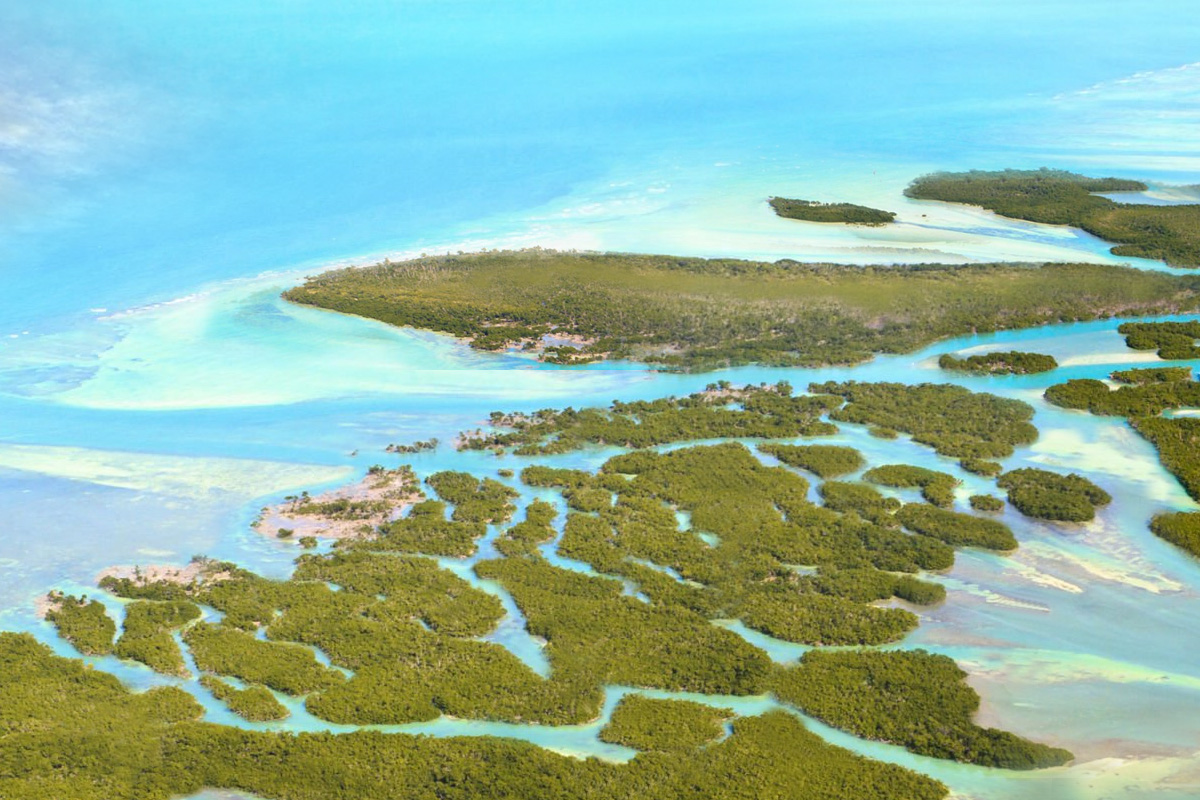
Some of the more common fish species you’ll encounter in Key West’s backcountry include tarpon, bonefish, permit, snapper, barracuda, and jacks, but there are upward of 25 game fish species that can be caught here year round.
When to Fish the Backcountry
No matter the season you’ll find fish biting, but for some species fishing is better during certain times of the year.
January—March
Pompano, Trout, Redfish, Bluefish, Snapper, Sharks, Tarpon, Barracudas, Mackerel, Jacks, Ladyfish, Cobia
There are over 20 species of fish in Key West’s backcountry and with the exception of tarpon, most fish species are biting strong. The channels and basins hold the largest variety of fish. Tarpon activity doesn’t typically pick up until water temperatures warm in late February and early March. Mangrove, mutton and yellowtail snapper are prolific. If you’re interested in fishing for big sharks, backcountry in March is where you’ll find the action.
April—May
Tarpon, Trout, Redfish, Barracudas, Sharks, Jacks, Ladyfish, Snapper
Plenty of action for most fish species, but tarpon fishing is where it’s at during April and May. Shark fishing is also fun this time of year, and if you want to catch some hammerheads, this is time.
June—December
Tarpon, Trout, Redfish, Sharks, Barracudas, Jacks, Ladyfish, Snook, Snapper
Tarpon fishing is still strong, but is usually relegated to early morning and evening trips to avoid the heat. Fishing a plug will net your snappers and groupers. Wind tend to pick up a bit during the summer and anglers will often mix it up with some wreck and reef fishing. Tarpon fishing slows in September and October, but is steady. November ushers in winter fishing in Key West’s backcountry. Many anglers opt for casting and jigging for trout this time of year.
Where to Fish the Backcountry
From Key West National Wildlife Refuge northeast to Great White Heron National Wildlife Refuge and from there east to Big Torch Key you’ll find a never ending supply of backcountry fishing enclaves and opportunities. Just follow the island chains and mangrove forests.
Deep Sea Fishing
The waters off Key West’s Atlantic coast offer some of the best deep sea fishing opportunties anywhere in the world. Anglers who venture here will find a plethora of bottom dwelling creatures and pelagic monsters to wet their line—and appetite.
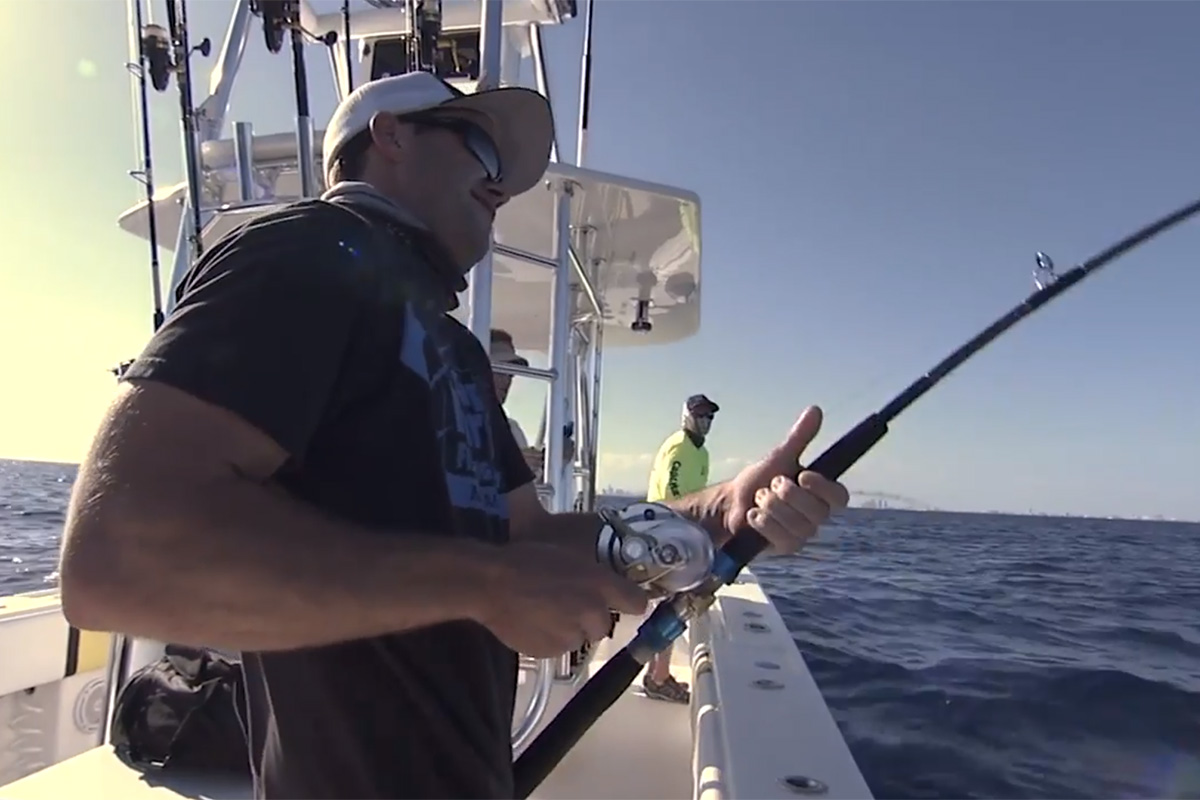
The most popular sport fish species found in the deep coastal waters off Key West include:
- Marlin. No question the most coveted game fish in the Western Hemisphere. There are two subspecies of Marlin in Key West waters—White and Blue Marlin. The White Marlin is the smaller of the two, but you’d never guess it for the fight it puts up. The Blue Marlin is the larger species and can reach over 1,000 pounds.
- Tuna. Tuna are coveted for their succulent meat and their fighting spirit. There are three species of tuna: Blackfin, Yellowfin and Bluefin. Blackfin are the most common tuna in Key West. To find tuna, target underwater humps, wrecks and structure. Casting behind shrimp boats is also recommended.
- Sailfish. This member of the billfish family is one of the fastest fish in the ocean. They’re a prize catch and a magnificent sight to behold as they break through the surface on the end of your line. The best time of year to target sailfish is mid November through January, and again in April through early May.
- Mahi Mahi. Also known as dolphin fish, the Mahi Mahi is one of the most striking of all pelagic fish species—so don’t forget your camera. It’s a ferocious fighter and is a table fare prized for its delicate meat. Your best chance at hooking a Mahi Mahi is from late spring through early fall. Trolling with live bait or articial lures is effective for targeting this fish.
- Snapper. You’ll find snapper on inshore flats, backcountry basins, wrecks and reefs—and the deep sea is no exception. The best place to find snapper offshore is around the numerous reefs and wrecks in the area. Red snapper are the most common catch in Key West’s deeper waters, with mutton and yellowtail snapper coming in close behind.
- Grouper. There are three common species of grouper you’ll find in Key West’s offshore waters: Black, Red and Gag Grouper. Blacks are the most popular grouper among anglers. They put up just enough fight and their meat has a delectable flavor. Like snapper, grouper are often found sheltering near reefs and wrecks.
Other common deep sea game fish that call Key West home include swordfish, wahoo, cobia, and amberjack, among many others.
When to go Deep Sea Fishing
There really isn’t a best or worst time of the year to go deep sea fishing in Key West. Even during the depth of winter when it’s subzero in may parts of the United States, the most you’ll experience in Key West is a cold front—which happens to be a great time to target sailfish and other bill fish species trolling along the reefs.
January—March
Sailfish, Tuna, Wahoo, Dolphin Fish (Mahi Mahi), Kingfish, Spanish Mackerel, Cero Mackerel, Bonito
Deep sea fishing is hit or miss with most species. Fishing for mackerel, bonito and kingfish is strongest. January and February are great months for catching large kingfish, sailfish, and other billfish. Best chance of catching wahoo is during a new moon or full moon. When winds are blowing from the southeast chances of catching dolphin fish increases. March is the best month for sailfish, blackfin tunas and dolphin fish.
April—May
Sailfish, Tuna, Wahoo, Marlin, Dolphin Fish (Mahi, Mahi), Kingfish, Spanish Mackerel, Cero Mackerel, Bonito
Sailfish, dolphin fish, and black fin tunas are abundant April through May. Target waters nearest the reefs. April and May are great months for finding large dolphin fish.
June—October
Dolphin, Marlin, Wahoo, Sword Fish, Deep Drop
The summer months are great for dolphin fishing. For dolphin fish, target the water between the reefs and 1500 feet. The full moon brings out large blue and white marlin, with the occassional wahoo. Sword fishing is as good as it gets between June and August. Marlin fishing begins to decline in August and dolphin fish get smaller as summer gives way fall.
November—December
Wahoo, Sailfish, Blackfin Tunas, King fish, Dolphin
The bite dies off a bit in November. Wahoo fishing is still good during full moon. Anglers start targeting the reefs. During December the dolphin fish bite is still be strong at times—typically when there’s a southeasterly wind.
Where to go Deep Sea Fishing
There are so many deep sea fishing spots in Key West I couldn’t list all of them in this article. Below I’ll review a few spots I believe offer some of the most productive year round deep sea fishing in the waters near Key West.
- Marathon Humps. The water here reaches depths of 500 feet and offers excellent fishing for a variety of pelagic species including Tuna, Wahoo, Marlin, Sailfish, Dolphin Fish, and more. Good location if you want to reel in some bottom monsters.
- Marquesas Keys. Not as deep as other locations, but the bottom fishing can be exquisite. The rocky bottoms team with snapper and grouper. Located 25 miles due west of Key West. (Take your fly fishing and light tackle gear for some backcountry fishing on the way.)
- The Wall. Also known as “Woods Wall”, this spot is located 23 miles southeast of Key West in the North Atlantic. Depths reach over 2,000 feet and this is where you’ll find a good number of big Blue Marlin—so bring your trolling gear.
- Dry Tortugas. This spot is 70 miles due west of Key West. It’s a bit of a boat ride to get there, but well worth the trip. It’s full of natural coral reefs and is a hotbead of fish activity. Sailfish, Marlin, Grouper, Snapper, Mahi Mahi… you name it and you’ll find it here.
For a more comprehensive list of deep sea fishing spots near Key West, see the Key West “Offshore Fishing” section on our Florida Keys Fishing Reefs, Wrecks and Map Coordinates page.
With such great deep sea fishing it’s no surprise that Key West is ground zero for deep sea fishing tournaments. If you’re interested in trying your hand at some competitive fishing, sign up for the annual Key West Fishing Tournament. The tournament has four divisions: Men, Women, Junior (age 10-15) and Peewee (under 10). It’s a fun way to involve the entire family in your next Key West fishing adventure.
Reefs and Wrecks
Key West has the 3rd largest reef system in the entire world. Is it any surprise it also offers some of the world’s best reef fishing? Reefs and shipwrecks provide offshore and nearshore fishing opportunities on both the Atlantic and Gulf sides of Key West within 5 miles of the shore in less than 40 feet of water.
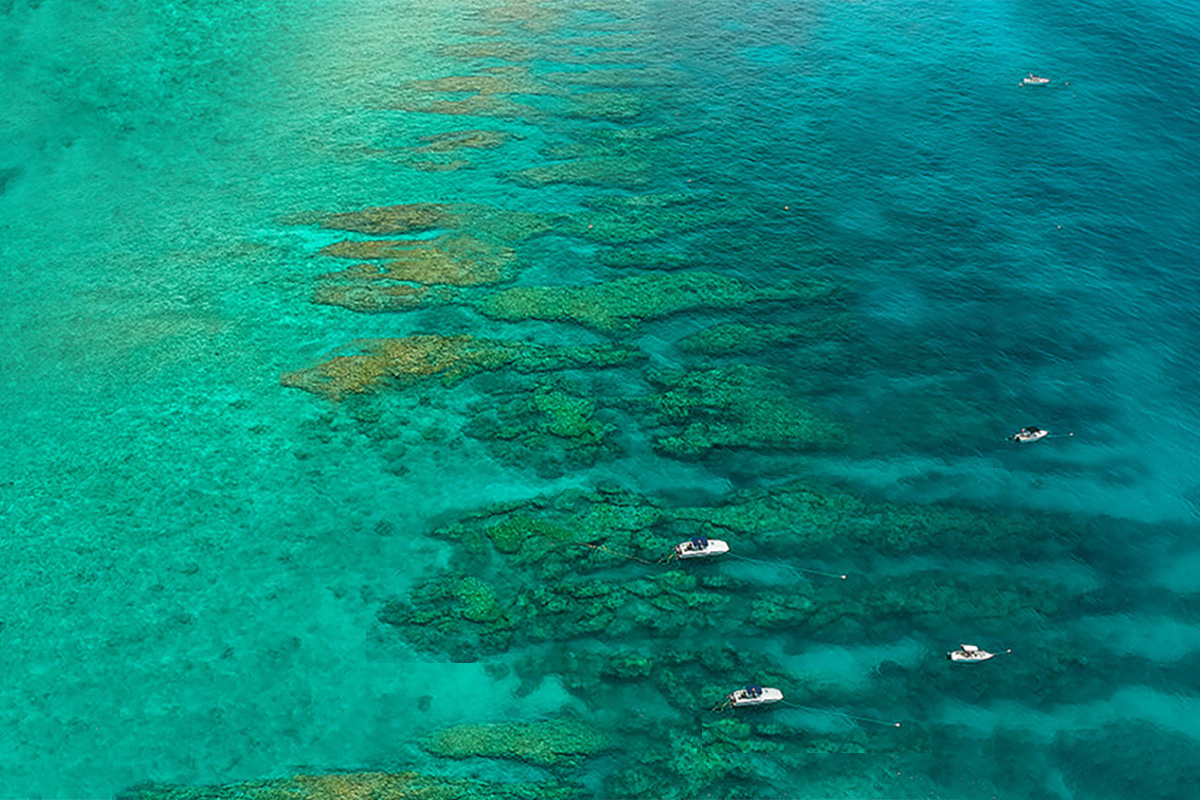
Key West reefs are home to roughly 500 species of fish. Some of the more common game fish species you’ll encounter include snapper, grouper, tuna, kingfish, king mackerel, cero mackerel, yellow jacks, african pompano, cobia, mahi mahi, and sailfish, among others.
The main methods for fishing Key West reefs and wrecks is drift fishing, slow pitch and speed jigs, and anchoring for some bottom fishing. Something to remember is that everything on patch reefs has excellent eyesight and water clarity is generally high, so you want to fish with a low visibility line.
A 12lb pound test line on a light spinning rod is ideal for catching most anything under 20 pounds—which accounts for about eighty percent of what you’ll find on a reef. For a light setup I recommend at least 20 feet of 20lb test fluoro leader with 12 inches of 40lb trace wire (just in case some mackarel show up). Attach a DMC 5/0 live bait hook or 1/0 circle hook with a bally and you’re good to go.
For larger fish on or near the bottom, you need to step it up a little. A 6’6″ to 7′ spinning or jigging rod is what I prefer for targeting lunkers in deeper water. Match your rod with a medium duty Shimano TwinPower 5000. Shimano is what I use, but you can use any comparable reel that can take a beating. You still want that 20 foot leader but increase the test to 30lbs and go with a braid. Finally, switchout your hook for a 1/2 to 1oz jig head. Chartreuse, pink or white, it doesn’t matter. Then drop it to the bottom with some bally and wait.
If you want to target some monsters, you can still use a 6’6″ rod, but make sure it has some backbone and increase your reel to the larger 8000 series. Line, hook, and bait specs remain the same. Regardless of fish size, always set hard—and set as soon as you feel a bite. The last thing you want is your catch retreating into the coral and tangling your line—and that’s exactly what will happen if you let the fish take your bait and run.
Two baits I fish on the reefs are pinfish and fresh ballyhoo. Artificial lures and baits have their place, but reef fishing really requires fresh, natural baits. I’ll fish my pinfish whole or even cut it into halves or even thirds. Take some time before you start fishing to procure some fresh bait. Show up with frozen bait, it will fall apart, and your catch rate will plummet.
When to Fish Wrecks and Reefs
Every anglers seems to have their preferred season to reef fish, but it’s really a year round fishery. With the right technique, you can put a decent catch together any time of year.
January—December
Yellowtail Snapper, Mutton Snapper, Jacks, Barracudas, Permit, Sharks, Kingfish, Cobia, Cero, Spanish Mackerel
Snapper are abundant on the wrecks and reefs found on the Atlantic side of Key West. There are also good numbers of cobia and permit, as well as consistent barracuda. Black fin tuna may begin showing up in the water surrounding reefs in February and March, while cobia numbers dwindle.
Permit are spawning in the wrecks and reefs throughout April and May. Blackfins are more abundant. Grouper fishing seasons opens in May and the fishing is excellent. Fishing the wrecks and reefs is productive throughout the remainder of the summer. Bottom fishing the reefs peaks in September through November. December is the last month of Atlantic grouper season.
Regardless of time of year, what you really want is some current. Moving water will get your chum out, create a nice slick, and draw the fish in. No current and the chum is going to sink straight down and you’re not going to create that long chum slick fish love. Ideal condition is when the wind is blowing in the same direction as the current.
Where to fish?
There are so many patch reefs in the waters off Key West it can be really hard to know where to start. A few things to look for using sonar are sharp ledges, 90 degree angles, and dropoffs adjacent to open sandy areas. That where you’ll find snapper hiding and roaming.
Hawks Channel patch reefs are some of my favorite for fishing snapper, grouper, barracuda and macks. This is a distance from Key West, but worth the trip.
Cosgrove Shoal just west of Key West always produces nice cero and king catches, as does End of the Bar seamount 11 miles west of Key West. You can find some big fish at the later location during the winter—snapper, wahoo, sailfish.
There are several productive patch reefs before arriving at Ft Jefferson Dry Tortuga Nation Park 70 miles to the west. A few of good places to stop on your way over are Marquesas Keys, Rebecca Shoal and New Ground.
You can also hit the bar off Boca Grande Key and Eastern Dry Rocks. A lot of fish species congregate here during the cooler winter months.
In addition to abundant patch reefs, there are several deep water reefs and wrecks I recommend every angler visit at least once while in Key West. Wrecks in particular tend be popular hangouts for larger grouper, cobia and tuna.
- Hoyt Vandenberg. Artificial reef 7 miles southeast of Key West island. Top of the wreck is about 40 feet below the surface. You’ll find snapper, tuna, mackerel, barracuda, bonita and kingfish.
- USS Curb. Ship was sunk on purpose to create an artificial reef. Sits 180 feet down. Lots of amberjacks, wahoo, snapper, grouper and blackfin tuna.
- SUB. AKA USS S-16 is 18 miles south of Key West. Rests at a depth of 260 feet. Mutton snapper, red snapper, amberjacks and blackfin tuna are plentiful here.
- Key West Tournament Reef. 100′ steel barge located at a depth of 184 feet. Popular location for fishing snapper, grouper, and other pelagic species.
You can find a more extensive list of wrecks and reefs in the “Offshore Fishing” section on the Florida Keys Fishing Reefs, Wrecks and Map Coordinates page.
Key West Fish Species and Seasons
There are over 500 species of fish inhabiting the waters surrounding Key West. The following Key West fishing calendar lists the most popular game fish species in Key West along with peak, good, and fair fishing seasons for each species.
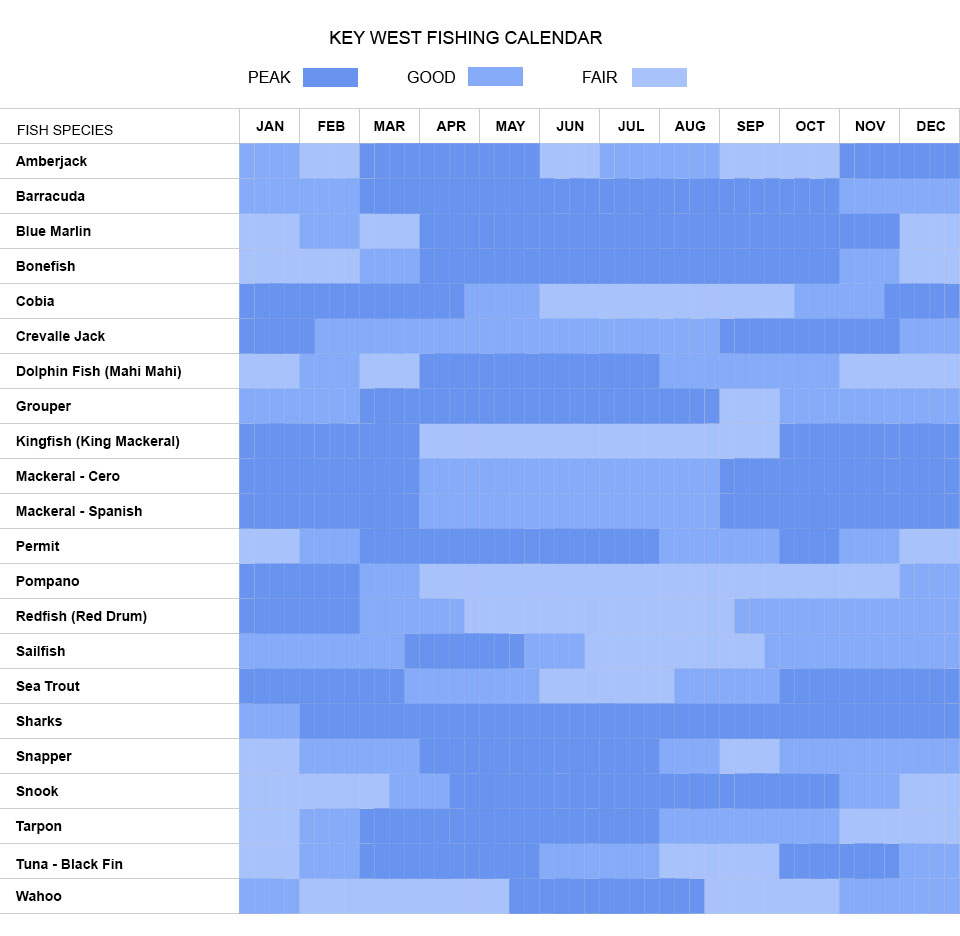
Concluding thoughts…
The decision whether to go pier fishing, flats fishing, backcountry fishing or deep sea fishing really shouldn’t be a decision at all. If you’re coming to Key West to fish, then stay a while—and do them all!
If you’re not coming to town to fish, and you’re going to be landlocked the entire time you’re in town, then my recommendation is to hit White Street Pier and Smathers Beach. These locations are close together and close to town. Better yet, they offer some great night fishing you can easily fit in after a day on Duval Street.
Flats fishing and backcountry fishing go hand in hand in my book. If you’re already out on the flats, in just a few minutes you can be in the mangrove-lined bays, creeks, and channels to do some backcountry prospecting. I typically like to fish the flats in the morning and the evenings when it’s cooler, and do my backcountry fishing during the heat of the day.
If you get all “flats” out and want to mix it up a little, head out to one of the nearbry reefs or wreck to do some jigging and bottom fishing. You’ll find several shallow patch reefs within a few miles Key West that hold some nice size snappers and grouper. Some light tackle with a jig and some fresh bait is all you need.
A fishing trip to the keys just isn’t complete without the opportunity to hook a behemoth sailfish or marlin. A deep sea fishing adventure requires a bit more prep work, but it will create an unforgettable experience you’ll charish for years to come.


